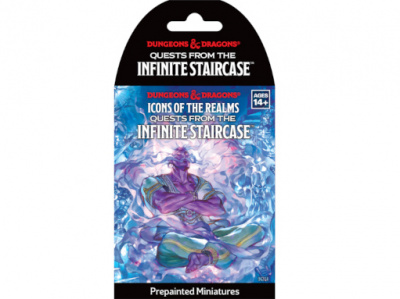We recently conducted our annual interview with Marvel publisher Dan Buckley about the state of the comics business and Marvel's place in it. In Part 2, we discuss the way Marvel approaches its mass market outlets as ways to reach new consumers, the relationship between movies and graphic novel sales, and Marvel's graphic novel share and investment in inventory. In Part 1, we talk about the over-all market conditions for comics and graphic novels in comic stores, bookstores, mass merchants, and newsstand outlets. In Part 3, we talk about whether videogame licenses help or hurt comic sales and the risks and rewards of variant covers and reprints. And in Part 4, we talk about whether Marvel would ever license its comics (like it does toy manufacturing), whether comic-based movies are a bubble, how Marvel is approaching the female young adult market, and the challenges and opportunities for the coming year.
You have several high traffic channels now that provide the opportunity to recruit new consumers into the comic space-convenience stores, bookstores, and mass merchants. How do you view those channels in terms of recruiting new consumers? Do you see them as hitting different customer groupings and tailor the product accordingly? Or is it more a matter of just throwing the broadest-based material out in each channel and hoping it finds its audience?
It's a little bit of both. The newsstand/convenience/drug is much more of a magazine kind of feel. The racking and merchandising you set up to support the comic functions, but it doesn't have a lot of shelf space. We narrow the focus. It's people going in and out to get a beverage, salty snacks, maybe pick up a prescription; they're looking to get in and out within five minutes. You have to make it something with which they're familiar. That's why we're very cognizant of what titles we're putting in. We also want to make sure we have a little bit of a demographic reach because it is such a broad-based place.
Mass merchants have their own wants and needs. You have to take into account their consumer base, where they're looking to merchandise, where they're looking to service it...
Where it is in the store, in other words?
Where it is in the store, and things like what buyer you're dealing with. That's really on a case by case basis, where the bookstores have a very unique environment. It's a great environment because people go in there and hang out. It's a bit of a destination shop. People often browse and have a cup of coffee. Our books in the digest program are much stronger in there.
We do have a pretty good comics [periodical] program in bookstores too. I feel very comfortable with our core comic book program. We don't put seventy titles of our monthlies in there, but we put in somewhere between fifteen to twenty-four of the titles in that venue. It's a different type of reader. They search this stuff out, where in the convenience and drug stores you're looking for an intercept, and hopefully you build a habit. I see convenience and drugstores as being awareness and trial. Mass merchants are also awareness and trial. In the bookstore, you're doing some awareness and trial but it's mostly the converted. They're in there to pick up certain books; they follow certain authors; they follow certain characters; they go out of their way to spend time there; or purchase gifts. We think about what the product mix is, but we're not going to make every color of the rainbow if you know what I mean.
You mentioned drugstores. How many drugstore outlets are you in?
We have all the Walgreens. I can't remember the number off the top of my head.
Not as many as the convenience stores?
Not quite as many, but it's a good intercept.
Going back to the bookstores, you talked a little bit about the movies and their impact on sales. What do you see as the variable that determines the extent of success of a comic or graphic novel product based on or tied to a movie? Just quick comparisons -- Sin City was massive in terms of its graphic novel impact. It put books on top of the graphic novel chart in bookstores, and in comic stores. Fantastic Four definitely had an impact, it moved the dial, there were more titles near the top of the list but it wasn't as powerful. Other movies, something like an Elektra, for example, it's tough to see much of an impact at all. Part of that's box office, but Fantastic Four was bigger box office than Sin City, but the visible sales impact wasn't as great. What do you see as the critical variable in determining...
That is a very odd question. Sin City's a great story and an incredible aberration. A lot of the success we have in bookstores does have to do with how people reacted to the movie, but it also has to do with the fact that because of the marketing programs being done by the studios or through our licensing department, the bookstores are much more open to getting behind it. It's very hard for me to say, 'Spider-Man's a huge character, why don't we do a waterfall, or more merchandising, or put this in front of the store?' The movies have given us the opportunity to put a little bit more behind the product and sell it in. You evaluate the existing Q score, or the existing popularity of the character. What is the rating of the movie? The movies definitely help each property because it raises the Q factor of the characters. It has impact.
Sin City is a great story, but a lot of the PR. associated with the movie is associated with Frank and the way they made that movie. It had that auteur feel to it. People wanted to see, 'Did he do it shot for shot?' It struck a certain chord. Frank has moved books before with the Dark Knight properties. He's already a saleable author that's come out of our community, very much like Neil Gaiman, which is a little bit of a rarity for us. You just had a unique combination of effects in Sin City, being both a box office and very much a critical success. FF has helped a lot. We've moved sales. I'm sure licensing is doing pretty well too. Is there a mathematical formula? Most likely not. But it gives us an opportunity to put product out there, which then in turn gives us an opportunity to move more.
I know I'm not answering your question directly, but there really isn't a variable. We look at the character, we look at the rating, we look at the release dates. Is it a summer blockbuster movie? Is it a February release? Is it a dark character versus an all-ages type of movie character? Things like that have a definite impact.
All channels combined, where do you think Marvel falls in the ranks of all graphic novel publishers in terms of dollar sales per year?
You know what? Great question--I wish I had the answer. We're in the top three. I haven't looked at the manga publishers as of late. We have an opportunity to be #1 this year. DC's done a very good job over the past twenty years supporting their graphic fiction program. We only just started five or six years ago. We've learned a lot of things along the way. We're having a great year as far as graphic fiction goes. This past May was the first time we were the #1 trade paperback publisher in the direct market, since I can remember (laughs). So we're in that area, but I haven't examined the manga numbers enough to give you an honest assessment.
We haven't analyzed the share issues specifically, but just based on where I see titles placed on the charts I'm assuming that Viz and Tokyopop are the top two. If that's the case, and you think you're in the top three, does that mean you think you're ahead of Dark Horse and DC?
I think we would be this year. The Ultimates has done a lot for us in that aspect. They have a very good trade support program.
Things have changed a lot in the last year. Do you have any idea how many backlist SKUs you've got in your graphic novel line?
I don't know the exact number but I know I've got a hell of a lot more (laughs).
Last year you said three to four hundred.
We're higher than that and we're doing a much better job supporting people being able to get the backlist. Historically we've had some problems understanding how to support that, and felt uncomfortable with how deep you go with inventory to support that function. We've spent a lot of time in the last eighteen months figuring that out. I feel very comfortable that if you called our retailers, they might initially say, 'No, Marvel didn't support that backlist item.' I would challenge you to tell them to call Diamond and find out if it's there or not. Unless it's the most esoteric title, eight out of ten times they'll be able to get that book.
We've heard in the last few months a few retailers saying, 'The Marvel in-print isn't that great.' So we asked David [Gabriel] about it, and he said, 'No it's pretty good.' Before we talked I looked, for example, at your Essentials line. I found that Essential X-Men Vol. II isn't on Diamond's list, but pretty much everything else is right there in sequence.
If it's X-Men it will be there soon. We've had to do a lot of legwork backwards. We had to evaluate and prioritize what went where and then evaluate the success of those things being sold. We needed to develop our own formula for risk and return. We're doing a pretty good job with it right now. I know we're going to be dealing with a lot of perceptions in the marketplace that we don't support our backlist, but we've made a concerted effort in the last year to do that. It may take us a lot longer to deal with the perception of our support of that, but that's a separate issue, and we just need to make sure we communicate that to people.







